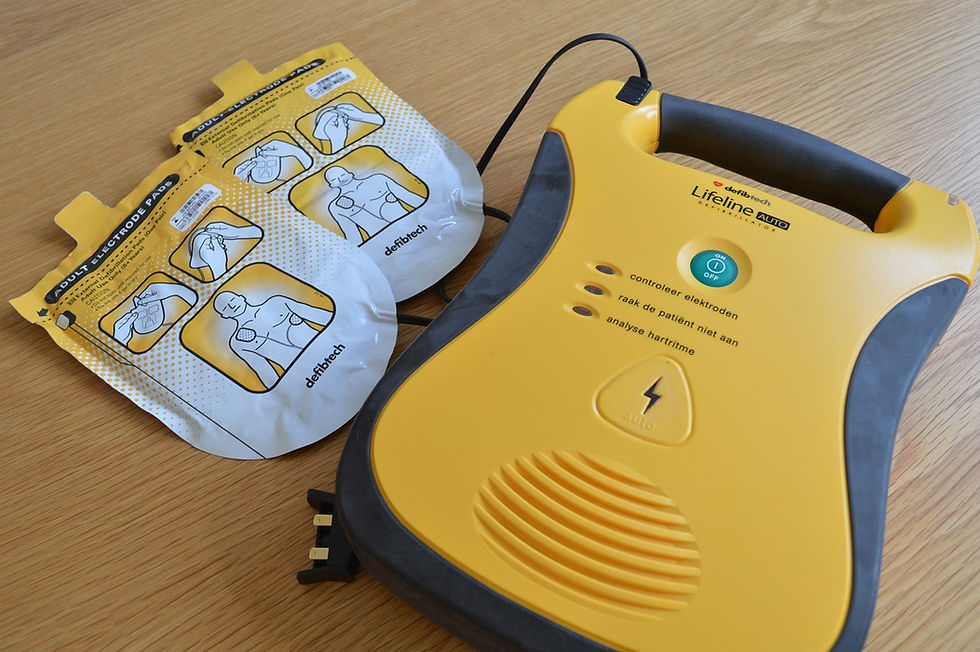Automated External Defibrillator: How To Use
- SGFIRSTAID

- Sep 9, 2021
- 2 min read
Updated: Dec 6, 2024
If an adult or a child is in cardiac arrest (not responsive, not breathing and no pulse), you should begin cardiopulmonary resuscitation (CPR) with chest compressions, and yell for someone to call 995 and get an AED.

Cardiac arrest can be fatal if not treated within minutes. Survival outside a hospital depends on prompt bystander emergency response.
What is an AED?
An AED (automated external defibrillator) is an electronic device that can analyse a heart rhythm to determine if a shock is needed for someone in cardiac arrest. While most cardiac arrests occur in adults, sudden cardiac arrest can occur in a child or an adolescent.

How to use an AED Device in an emergency:
When then AED is available, continue chest compressions and rescue breathing while someone else turns on the AED and attaches the pads.
If the AED says “shock advised," press the charge button, stand clear of the patient, and press the shock button when it lights up. The AED will check the child’s heart rhythm and decide whether or not to deliver a shock. Be sure that no one is touching the child when a shock is delivered.
Then resume CPR. It is very important to minimize interruptions of rescue breathing and chest compressions. In addition, when doing chest compressions, lift completely off the chest between compressions to allow for chest recoil.
Adult and Paediatric Pads for AEDs:
While all AEDS are made for adults, there are paediatric pads that adjust the energy level used. These pads are for younger children (less than 8 years).
You can use adult pads for children 8 years and older.
You can use adult pads for a child less than 8 years, but you may have to apply them differently than shown on the pads: apply one on the front of the chest, the other on the back, so they do not touch. Once the pads are attached, follow the instructions given by the AED.
Learn How to Use an AED!
To learn more about how to use an AED, SGFirstAid recommends taking a basic first aid course in CPR for parents and caregivers. These classes will give you a chance to practice CPR and use an AED.

SgFirstAid also supports age-appropriate life-support training for students, including CPR for older children and all staff, in all schools starting with the primary grades. SgFirstAid also encourages learning how to properly used the AED you see around the island and lift landings, so you and those around you know how to use them.
Designed for laypersons and delivered in just 4 hours, the CPR+AED Course will show you how to perform Cardiopulmonary Resuscitation (CPR) with precision, and how to apply and operate an Automated External Defibrillator (AED) effectively during a cardiac arrest scenario.
The course also covers the important do's and don'ts of that all rescuers must know when performing CPR and AED. Accredited by the Singapore Resuscitation and First Aid Council (SRFAC).
To find out more about CPR+AED Course
Do contact us at
Tel: 62978123
WhatsApp: 86715681





Comments